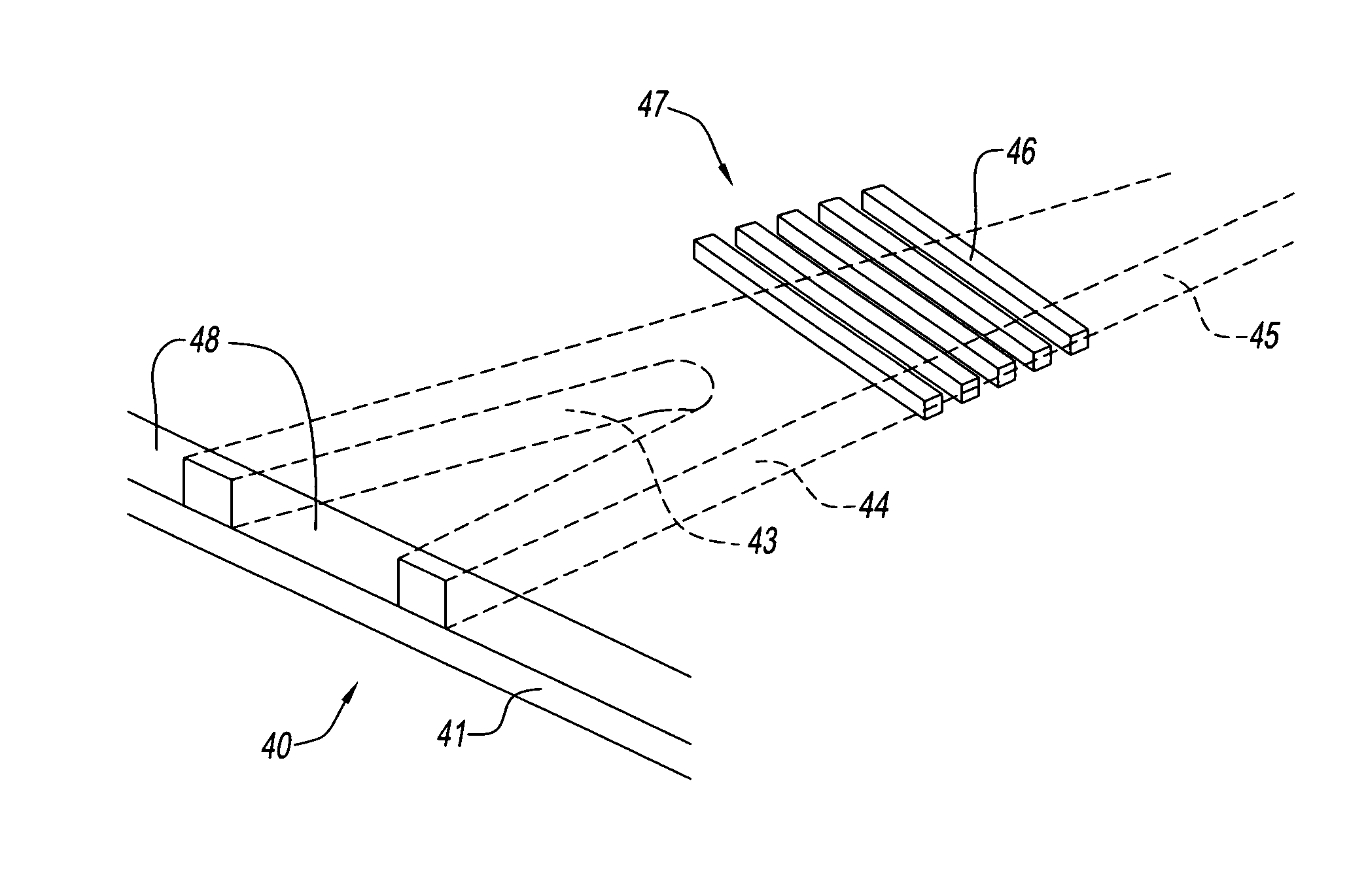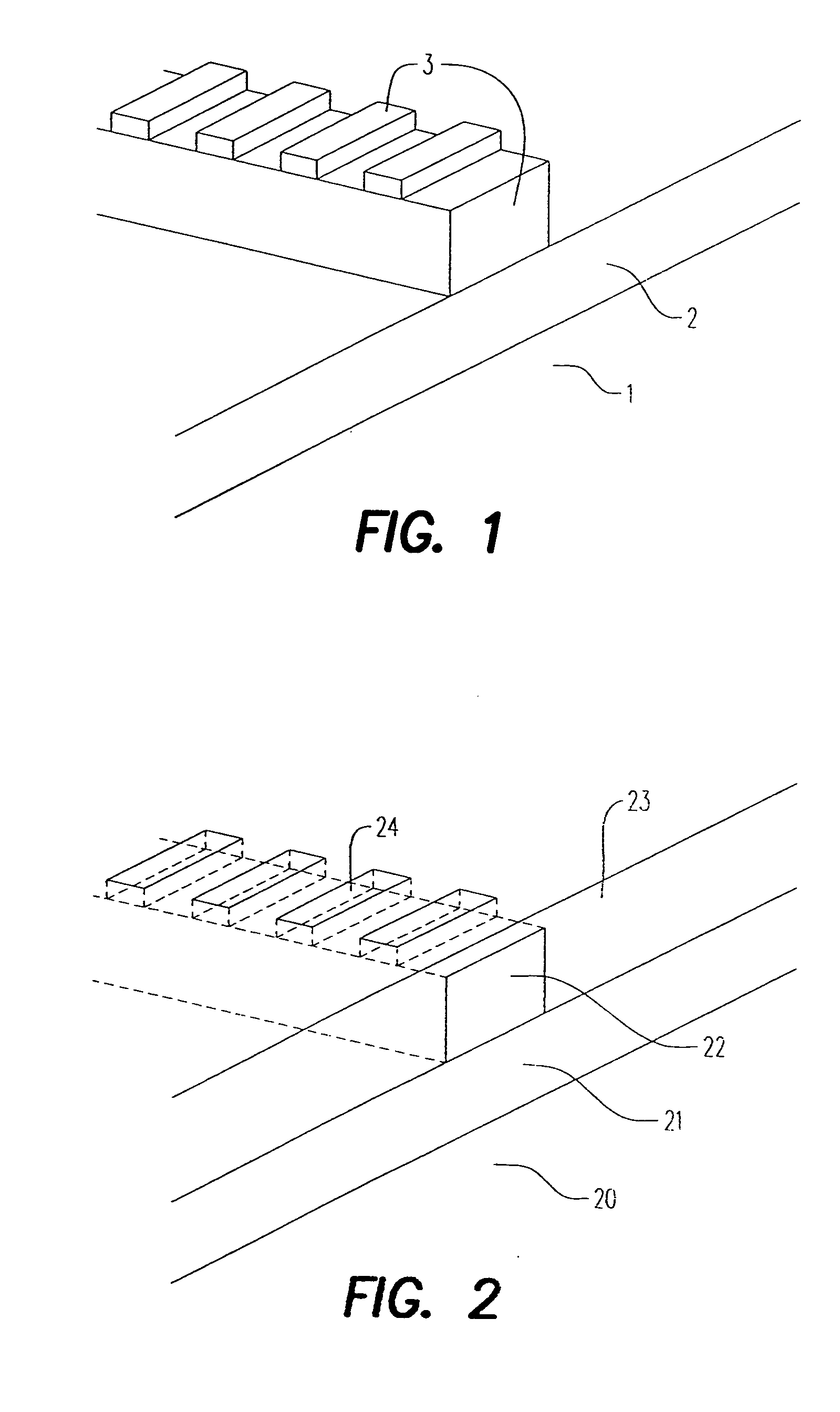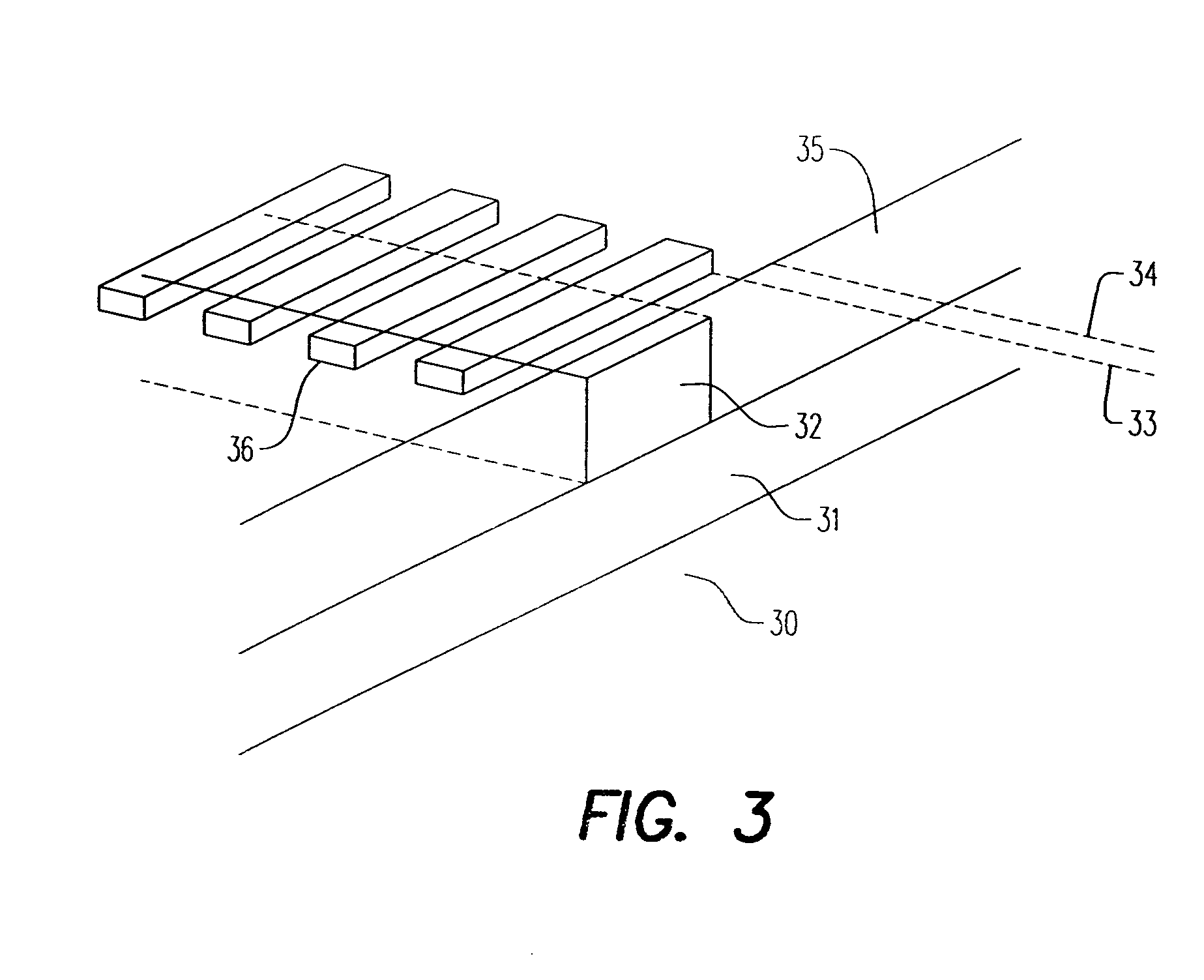Optical waveguides and grating structures fabricated using polymeric dielectric compositions
a technology of polymer dielectric composition and optical waveguide, which is applied in the field of optical waveguide and grating production methods, can solve the problems of reducing the cost of fiber optic components, installing, upgrading or expanding a fiber optic network system, and significant impact on the cost-per-customer of delivering additional telecommunication services, and achieves the effect of more dimensional precision
- Summary
- Abstract
- Description
- Claims
- Application Information
AI Technical Summary
Benefits of technology
Problems solved by technology
Method used
Image
Examples
example 1
BCB Core Waveguide with Integrated BCB Grating
[0059]The following example describes a fabrication process for integrating a grating on the top surface of an optical waveguide where both the grating and core waveguide material are, for example, composed of BCB. The waveguide material can be a different material, formed using an entirely different process. Moreover, the waveguide and / or grating material can be fabricated using other optically suitable materials that can be patterned using electron beam and / or optical lithography.
[0060]FIG. 1 depicts a schematic illustration of the final structure. One key element in the process involves a second spin deposition of BCB over a BCB waveguide as outlined below. A key in this process is the planarization properties of BCB. BCB can exhibit approximately 90% planarization or, at times, more, leaving the surface of a substrate with features of 1 micron or 2 microns or 3 microns in depth planar to within less than 0.5 microns or in some cases ...
example 2
BCB Cladding Waveguide with Integrated BCB Grating
[0063]This example is similar to Example 1 except the BCB material is used as a cladding material as well as a grating material. Other suitable optical materials may be used which can be patterned using electron beam or optical lithography. A unique aspect of this process is that the waveguide core material can be any optically suitable material which provides an index of refraction appropriate for the design of the waveguide desired. FIG. 2 is a schematic illustration of the final structure. The general process for fabricating the structure is given below.
An example of a process for fabricating a waveguide with a BCB cladding and integrated grating is summarized below.
[0064]
Example 2 - Waveguide with BCB core and integrated gratingJMC / GPLStep 1Deposit lowerDeposit SiO2 or other suitableeMask means an electroniccladding materialcladding material. This step ismask file used by the e-beamnot needed if the substrate isGlass or other opt...
example 3
BCB Cladding With BCB Grating Fabricated on Surface
[0065]More complex grating structures can be integrated with a waveguide using BCB as a cladding material by curing the BCB fully (no exposure or development) and either 1) Applying an additional thinner layer of BCB (BCB can be thinned by adding Dow T1100, which is B-staged divinylsiloxane-bis-20–39%, benzocyclobutene Mesitylene 61–70%, Polymerized 1,2-Dihydro-2,2,4-trimethyl quinoline 0.01–10%) on top of the cured BCB (which is insensitive to further optical exposure to electron beam exposure), expose a grating structure using either electron beam or optical lithography and then develop the grating, or 2) Applying an additional layer of another material, such as BCB, curing if required, and then applying another masking material, patterning, developing and etching the grating structure.
[0066]Process 1) above is summarized below and a sample structure is shown schematically in FIG. 3.
An example of a process for fabricating a wavegu...
PUM
| Property | Measurement | Unit |
|---|---|---|
| size | aaaaa | aaaaa |
| wavelength | aaaaa | aaaaa |
| temperature | aaaaa | aaaaa |
Abstract
Description
Claims
Application Information
 Login to View More
Login to View More - R&D
- Intellectual Property
- Life Sciences
- Materials
- Tech Scout
- Unparalleled Data Quality
- Higher Quality Content
- 60% Fewer Hallucinations
Browse by: Latest US Patents, China's latest patents, Technical Efficacy Thesaurus, Application Domain, Technology Topic, Popular Technical Reports.
© 2025 PatSnap. All rights reserved.Legal|Privacy policy|Modern Slavery Act Transparency Statement|Sitemap|About US| Contact US: help@patsnap.com



